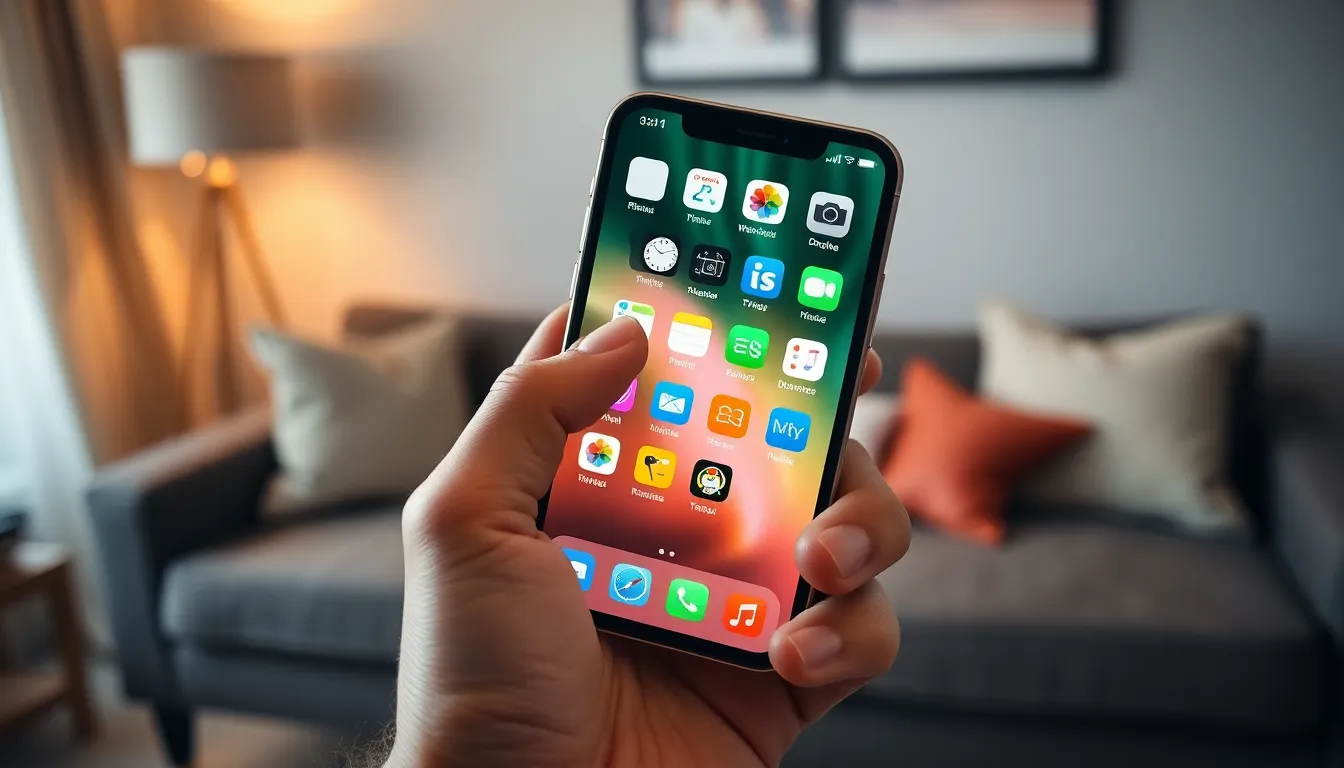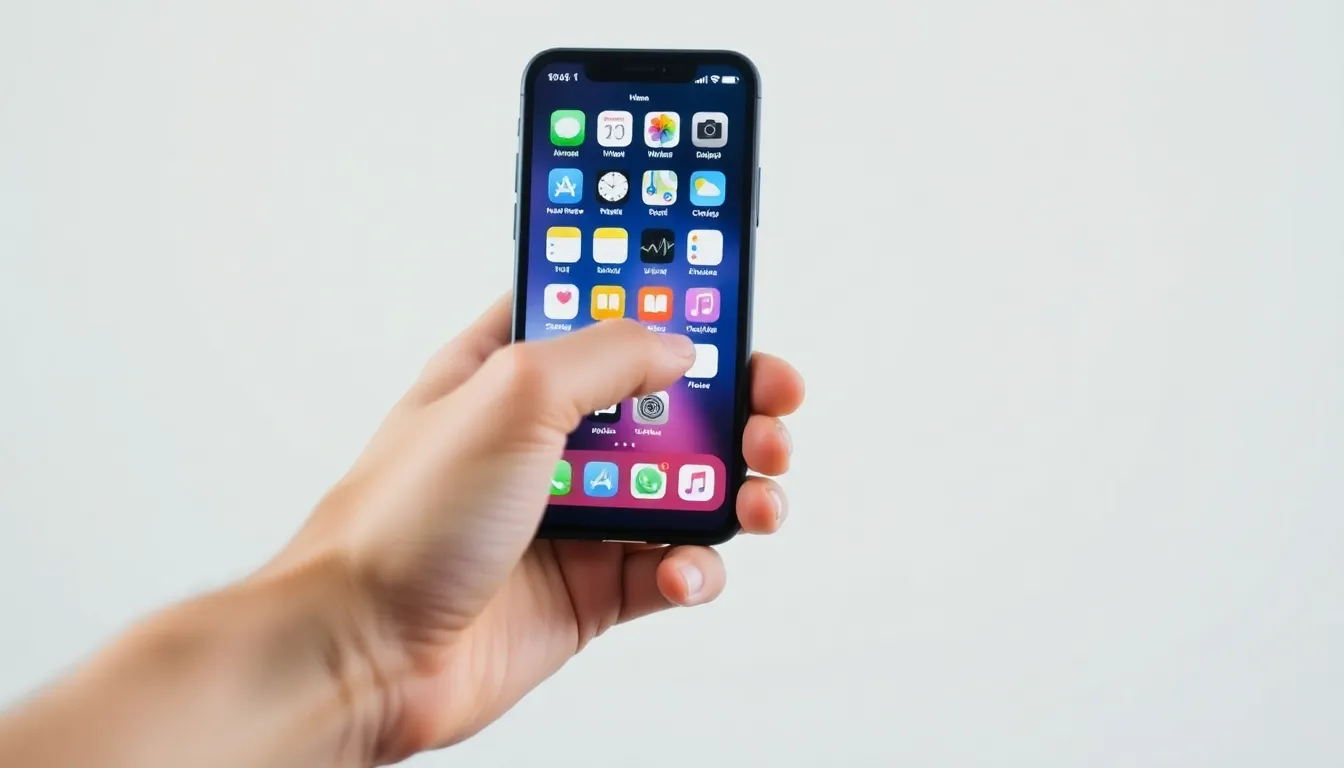In a world where apps multiply faster than rabbits, it’s easy to find yourself drowning in a sea of icons on your iPhone. Some apps are like that friend who overstays their welcome—great at first, but now just taking up space. If you’ve got a few digital squatters on your home screen, it’s time to reclaim your device and clear the clutter.
Table of Contents
ToggleUnderstanding App Deletion on Your iPhone
Managing apps on an iPhone greatly improves device performance and user experience. Removing unnecessary applications frees up storage space and enhances organization.
Importance of Managing Apps
Effective app management keeps your iPhone running smoothly. Users benefit from increased storage availability and better battery life. Focus on retaining essential apps while offloading those that aren’t regularly used. Regularly deleting unneeded applications helps maintain an organized home screen. Simplifying app access leads to a more enjoyable user experience.
Common Reasons for Deletion
Many users delete apps because of storage constraints. Storage usage can quickly escalate, especially with large applications. Some may remove apps that no longer align with their interests or needs. Regular updates may lead to unwanted changes that prompt users to seek alternatives. Additionally, performance issues commonly arise with rarely used applications, making deletion a logical choice.
Methods to Delete Apps

Deleting apps on an iPhone can streamline the home screen and free up valuable storage. Two common methods allow users to remove unwanted applications easily.
Using the Home Screen
To delete an app from the home screen, press and hold the app icon until a menu appears. From there, choose “Remove App” to see options like “Delete App.” Tapping this option deletes the app from the device. Users also can remove the app icon by pressing and holding until the icons jiggle, then tapping the ‘X’ in the corner of the icon. Confirm the deletion when prompted. This method provides a quick and intuitive way to declutter the home screen.
Through Settings
Deleting apps through Settings offers another approach. Users should open the Settings app and scroll down to find the list of installed apps. Selecting an app reveals options, including “Delete App.” Choosing this option prompts a confirmation to proceed with the deletion. This method is beneficial for managing multiple apps since it provides a comprehensive view of all installed applications. It also ensures users can quickly identify and remove less frequently used apps.
Troubleshooting App Deletion Issues
App deletion may not always go as planned. Users may encounter issues that prevent successful removal. Common problems include inactive or greyed-out apps, as well as storage warnings.
Inactive or Greyed-Out Apps
Inactive or greyed-out apps often indicate restrictions or connectivity issues. Users may notice these apps don’t respond to deletion attempts. If an app appears greyed out, check for a software update. Outdated systems can cause these problems. Restarting the iPhone may also resolve the issue. Additionally, ensure that parental controls aren’t interfering with app deletion. Adjusting settings can restore full access to the app management feature.
Storage Warnings
Storage warnings can trigger unwanted complications. When storage space runs low, users can’t install new apps or updates. Such warnings may also result in difficulty deleting existing apps. Checking storage settings provides insight into how much space remains. Deleting larger apps can free up significant space. Users can also offload unused apps, allowing retention of data without permanent deletion. Regularly monitoring storage keeps the device running smoothly and enhances overall functionality.
Alternative Options
Users looking to manage their iPhone apps can explore additional strategies beyond deletion. These approaches help maintain a clutter-free interface while optimizing device performance.
Hiding Apps
Hiding apps offers a way to declutter the home screen without full deletion. Users can create a folder by dragging an app onto another app’s icon. This method allows them to limit visibility without losing access. By storing multiple apps in a single folder, they can keep important tools while reducing screen clutter. Ignoring apps doesn’t free up storage but helps focus on commonly used ones. Users can also utilize the App Library feature to archive apps and access them easily later.
Offloading Unused Apps
Offloading unused apps provides a smart solution for managing storage efficiently. This process retains app data while deleting the app itself. Users can activate this feature by navigating to Settings, tapping General, and selecting iPhone Storage. They’ll see a list of apps organized by storage usage. Tapping on an app reveals the option to offload, making it straightforward to recover space. When a user needs the app again, they can easily reinstall it without losing any saved information. This method balances storage management with convenience, ensuring a smoother user experience.
Managing apps on an iPhone is essential for maintaining optimal performance and a clutter-free experience. By regularly deleting unnecessary applications users can enhance their device’s efficiency and free up valuable storage space. The methods outlined for app deletion provide straightforward ways to streamline the home screen and improve overall usability.
Incorporating strategies like hiding apps or offloading unused ones can also contribute to a more organized interface. Staying proactive about app management not only boosts device performance but also ensures that users enjoy a seamless and enjoyable iPhone experience. Embracing these practices will ultimately lead to a more personalized and efficient digital environment.




